Pertinent Secrets of Cannabis Use and Cultivation
by nielskunze on August 13, 2015
Disclaimer: Nothing here is true; even the words have been photoshopped.
Over the years, I’ve been asked numerous times why I haven’t written an article on cannabis cultivation. My answer has always been that there is plenty of engaging material in that specific genre already; I’m just one more voice among a multitude. But recently I have begun to realize that there are certain aspects of cannabis use and cultivation for which I actually am one of the world’s leading experts. Perhaps it is indeed time that I wrote about those aspects.
The overarching question I will strive to answer once and for all is: Can I smoke pot and still live a spiritual life?
If you’re looking for a simple yes-or-no answer to that question, then, for you– definitely– the answer is ‘no.’ The answer for everyone else is that ‘it depends.’ What it depends upon will be the focus of this essay.
The first thing I’d like to say is that I agree (from experience) with the research which strongly suggests that cannabis use by persons under the age of twenty can severely affect how the brain self-organizes its cognitive functions. Heavy cannabis use will definitely have a marked affect upon the developing brain… but that requires a little perspective too; we will return to this truism at the end, in order to place it within the appropriate context.
Let’s begin with a few facts…
Cannabis is highly adaptable, able to accommodate a great variety of growing conditions. It loves Life.
It is primarily the mature female flower which imparts the main psychoactive effects… and is therefore the target of cultivation.
Harvest is typically taken at the end of life, just as energies are beginning to naturally decline; harvest is an agreeable euthanasia.
All of the psychoactive components of cannabis are contained in the resin on the outside of the plant.
Cannabis is highly impressionable.
In cultivating first a relationship with cannabis, we must remember that we are relating to a female; she is not just one of the boys! She craves attention and commitment; she desires a deep and meaningful relationship; she dislikes one-night-stands and short, shallow connections.
As with any teacher-plant taken for its immediate physiological and psychological effects, it only makes sense to cultivate a meaningful relationship with the Living Being of the plant– its Spirit, if you will.
In a relativistic universe, relationship is everything.
Clearly, I am advocating that you grow your own (except of course where doing so is illegal *winks*). When you cultivate a favourite strain over generations, the plants will naturally adapt their interactions with you, tailoring themselves specifically for your unique frame of mind. Cannabis is highly intuitive. (Pun intended.)
To some degree, cannabis will always mirror the consciousness of the one who has cared for it.
When you pick up a bag of weed from that sketchy guy who sleeps on the couch in 4C, should you really be surprised when it makes you sketchy and paranoid as you smoke it?
Virtually all commercial weed in the West is grown in isolation, disconnected from physical/electrical contact with the Earth, hidden away under artificial suns. Cannabis grown in such conditions is wholly a different species– traumatized, vulnerable to influence and desperate for connection.
Cannabis grown in contact with the Earth, beneath our natural sun, is confident and creative… and is eager to share that sublime connectivity with those who seek her counsel. She sparks connections and epiphanies beyond and beside our common trains of thought.
If cannabis can be grown in a remote forest glade, the impressions it receives throughout its life will be the many uncensored voices of nature’s Spirit coming to tell tales, poetry, mythologies, songs… or coming perhaps to dance, or otherwise perform… leaving their myriad subtle impressions in the glittering crystal resin. Thunder and lightning, and all manner of storms, will leave their energies in waves upon her form. She will naturally rejoice in those connections and do everything she chemically can to bring her caregiver into the fold of those very same connections… in body, in mind… as an invitation to Spirit to inspire the human flesh.
Numerous are the avenues for deepening one’s relationship to the Living Spirit of the cannabis plant; it is a strange and rewarding intimacy. There is near endless discussion about what fertilizers might be best for fully developing ‘killer’ bud. From the perspective of intimacy between plant and caregiver, there is none better (in my opinion) than using one’s own diluted fresh urine.
When one begins utilizing urine as a feeding agent, it quickly becomes apparent that the golden yellow liquid is more than appropriate and borders on miraculous. Cannabis grown outdoors in highly favourable conditions will often grow so fast that early fan leaves at the base of the plant will begin to turn yellow long before the encroachment of the season’s natural end. Often, just a single feeding with urine diluted with 5 parts water will be adequate to re-green those leaves within 48 hours. It is remarkable to behold! Continued feeding with diluted urine of an otherwise healthy plant will result in a very robust green infusing the whole plant– so much so that its colour moves right into the blue spectrum (an indication of mental energy developing and proliferating).
Think of urine as an informational substance. A urine sample is a complete indication of what circulates within an individual’s blood; that’s why it is the most-often used diagnostic in medical practice. Urine has the ‘ability’ to inform the cultivated cannabis plant virtually everything about the uniqueness of its individual caregiver– physiologically, psychologically, and emotionally.
Urine is typically about 98% water. It is well known and documented that water is a reliable carrier of information and that water is oft associated with the emotional nature. I only collect my urine during and after my long walks in the woods; that is when I am happiest and completely emotionally balanced. I also typically forage my breakfast and lunch along the way, so my urine is only imprinted with natural, wild substances when I collect it as a fertilizer. These kinds of details DO matter.
The conscientious cannabis caregiver can also adjust his own diet in order to influence the contents of his urine. Although the most abundant mineral in human urine is nitrogen (up to 2%), by ingesting greater amounts of nuts and seeds, the phosphorus content of urine can be markedly increased. Phosphorus is essential for full and complete flowering during the final stages of life. (Tip: high phosphorus bat guano too is nearly essential for maximum potency.)
On the topic of minerals… it is essential to provide fertilizing substances which contain ALL of the trace minerals, so that the most esoteric of plant chemistry may be engaged. If certain trace minerals are absent, even if they’re only required in the tiniest amounts, the plant’s ability to manufacture the most elite chemical compounds is negatively compromised. I use both glacial rock dust, which contains approximately 50 different mineral components, and Dead Sea salt– in minute concentrations– which contains some 90 different minerals.
Minerals are made available to the Living plant through the action of various microbes in the soil. For this reason alone, fresh worm castings are recommended to be added at the onset of flowering. Any serious cultivator of cannabis would do well to consider hosting an active worm farm; I do (for the last 5 years). The proliferation of healthy soil microbiota can be augmented with the periodic addition of unsulphured molasses. (Molasses is food for beneficial soil organisms.) For plants cultivated in a wild setting, molasses may not be appropriate, as it will often attract bears. (Again, I know this from personal experience.) But here, again, urine comes to the rescue! Although urine is a sterile liquid (containing no bacteria), it is a perfect attractant for just the right kind of bacteria to inhabit one’s soil; it can take the place of molasses in this regard– with the added benefit of acting as a deterrent to bears and other wild animals. (Urine is typically used to indicate territory and ‘ownership’ in the wild.)
Active compost is also highly recommended. For twenty years already I have maintained an active compost heap in the remote Forest. I recycle the same soil year after year– mainly for the sake of convenience. Over the years, I have experimented widely with different compostable additives.
The first obvious additive is manure or poop. Surprise, surprise, the type of poop selected makes a huge difference! One season early on, I gathered buckets of cow manure from the adjoining rangeland to pile on the heap. The subsequent crop induced incredible lethargy and almost uncontrollable munchies; think about a cow’s life– sound familiar? Cow manure is not recommended– unless you’re going for laziness and insatiable hunger. The next season I was fortunate to have several bears in the general area; I was able to gather a few buckets of bear poop, along with several buckets of elk poop deposited during the winter. It was a comparable amount of manure to the year before, but the crop induced a much more creative and energetic experience this time around.
I’ve also added things like horsetail, gathered from the immediate vicinity. Its high silica content is generally good for all plants, and it composts especially well. I’ve collected the flowering tops of thousands of dandelions and added those too; that’s like composting the sun! If one wishes to attract worms to an active compost heap, nettle is the recommended addition; worms love nettles. In the off-season, the colder months, be sure to visit the compost heap often and pee on it– of course!
These types of natural, traditional practices, when incorporated, serve to ground and connect the plants deeply into the organic web of life– so THAT’S where the harvest comes from… and that’s the experience that the plant has to share in its consciousness-altering provocations. (It may not perform particularly well at video games.)
I do realize that not everyone has easy access to remote forests. What I’ve described so far approaches the ideal. But every consideration we can offer our cannabis partners defines the relationship– which defines the quality of the subsequent high.
For many, indoors is the only viable option. Natural light is preferred over artificial, but indoors, that is often not an option. The new generation of LED lights use very little energy while providing a splendid yield. The critical aspect, in my opinion, of growing cannabis indoors is that the plants must be grounded (electrically). They must be in electrical contact with the Earth.
Consciousness– in the human body– is an electrical phenomenon (electrical brain synapses and nerve signaling). Plants dream with the Earth Mother through their electrical connection to her. Through an electrical ground, living bodies and plants can draw a limitless supply of electrons– negating the periodic buildup of voltage potential within. Whatever medium indoor plants are grown in, that medium must be electrically grounded. At the barest minimum, cannabis requires a ground connection throughout the flowering period– but through all growth stages would be best.
Cannabis has a complex nature. When the plant is completely cut off from physical/electrical contact with the Earth, she lacks the context from which to make sense of her own complex nature. She yearns for connection, and therefore is prone to connect with all manner of ‘other-worldly’ entities. Her very purpose for existing is the intermingling of consciousness– one of her higher aspirations. When cannabis is denied the opportunity to connect with Earth’s dreaming, she is often driven mad by all manner of unearthly agendas. (Very much like human beings.)
Plants have ears… that is, they respond to frequency. Musicians who relish the herb would be wise to cultivate plants exposed to their own preferred brand of music. Introduce cannabis to your music while it is still a Living, intelligent being, so when it comes to playing in collaboration post-harvest, she already knows your music well. Talk to your plants… as though they are at least as intelligent as you are… because they are! Tell them the things you’d like them to know; tell them what you might like to learn– together. Tell them, in advance, the day you intend to harvest; it’s only courteous. Cannabis that I’ve grown indoors has at the very least always been able to ‘listen’ to a minidisk of birdsong, crickets, a selection of classical music and some specific healing and mood-altering frequencies on a daily basis.
For some, perhaps many, cannabis is an active participant in their sex lives too. The plant has a definite affinity for increased somatic awareness. Cannabis’ sexuality can be courted and cultivated. Human orgasm is a high-energy event that can positively imprint the oozing resin of the mature cannabis flower– rather easily… with a sexual-resonant vibe; proximity is the factor here. Other bodily fluids, besides urine, can be utilized to affect intimacy… between plants and humans alike; imagination is the key. (This is a fertile field of exploration best left to the vagaries of human innovation… nudge-nudge-wink-wink.)
Cannabis is one of the most chemically complex plants on Earth; its botany is strikingly unique. Deliberately merging our own human consciousness with such a plant’s consciousness is– on the face of it– a serious and complex maneuver.
Weed that is grown as a profit-value commodity in isolation from the Living biosphere is a completely different creature from the cannabis borne of the complex relationship described above. I hope that at least that much is clear. A skilled chemist may even have great difficulty in distinguishing the two on a material, chemical basis, but honestly, we’re not so interested in the minute differences in chemistry anyway, just their effects– which are markedly huge! “Man, your weed is so different!” How many times have I heard that?
In my informed opinion, typical commercially-grown pot is mostly a detriment to the spiritual life of the smoker. It is inherently scattered and distracting, programmed by aspects of the persona of the one exploiting it– the grower-profiteer. Pot is an inroad into the user’s consciousness; it is a WILLED acceptance to have one’s consciousness merged and altered with and by an outside agent. I should think that all aspects of quality would come into consideration in such a unique and inherently intimate– and potentially dangerous– interaction. If you believe in any form of entity attachment or possession of the human mind, then you must believe that such entities would first seek to attach themselves to a desperate, traumatized and insecure pot plant… for the promise of the invitation to invade a human consciousness later. It’s just too convenient.
The weed I’ve cultivated has been utilized in partnership. It facilitates and augments a deeper creativity– both in my experience with cannabis, and cannabis’ experience with human.
When smoking weed, one’s intent in doing so is very telling of the ‘spiritual’ potential of such an instance. When one smokes as a means of escape, to anesthetize oneself, to check out, switch off, get fucked– obviously it’s not likely to be a very spiritual encounter. And unfortunately, the negative effects of scattered-ness, inability to concentrate, lethargy, apathy, disconnectedness and the possibility of entity infiltration are most likely to outweigh any positive effects in the long run. Typical commercial pot is not recommended for a spiritual life. If you can’t grow your own, at least secure your supply from someone you know and respect… and hopefully who utilizes organic techniques.
So finally, let us return to the question of the effects of cannabis upon the young developing human brain and how it organizes itself. Frequent cannabis use among teenagers will foster a more balanced cognitive organization between the two hemispheres of the brain. If anything, cannabis will tend to favour right-brain cognitive pathways (female flowers, more feminine traits). The real problem that this poses is that our society REQUIRES left-brain dominance. Our state education systems teach to the left hemisphere rather lopsidedly. So the so-called ‘brain-damage’ suffered by young pot-heads is more a matter of them no longer fitting into the rigid left-brain structures of our male-dominated society. They may very well have better balanced minds than the rest of an essentially insane society who is apt to see only craziness and ineptitude in such a state.
I have always sought to use cannabis creatively. It is likely that without the influence of cannabis in my life, I still would’ve written books and I probably would’ve written songs too… but not THESE books and not THESE songs. In my experience, cannabis helps to facilitate creative endeavours of singular originality. No one else could’ve written those books; no one else could’ve written those songs; no one else could’ve written this essay– no one else but me in collaboration with my creative partner, cannabis.
Please remember that all this is just my opinion– my pot-headed, brain-damaged perspective; clearly I’m not in my ‘right’ mind– that being the left, of course… bicamerality be damned!
(Diamonds ‘n Pig Shit, composed by me– and my special friend, performed with my band Missing Peace, from our 1996 debut album Tense Moments– whose very existence in this world is intricately tied to cannabis)
Addendum (August 12, 2015):
Future experimentation with cannabis may involve the investigation of the nutritive properties and effects of juicing wheat grass and cannabis trimmings together– a likely cure for everything.
And in a related field, users of magic mushrooms have consistently reported a marked difference between the effects of psychoactive mushrooms gathered from the wild as opposed to ones cultured in a ‘lab.’ Wild-crafted magic mushrooms impart an ease and connectedness that is often missing from the experience with their isolated lab-cultured counterparts. To my knowledge, no one grows magic mushrooms at home in a grounded environment. It would be easy enough to do. It has been suggested by reputable mycologists that the mycelia– the parent organism of mushrooms– that grows underground in network structures resembling neurons may very well be the physical, biological structures housing the Earth’s own mind. The whole situation seems worth investigating.
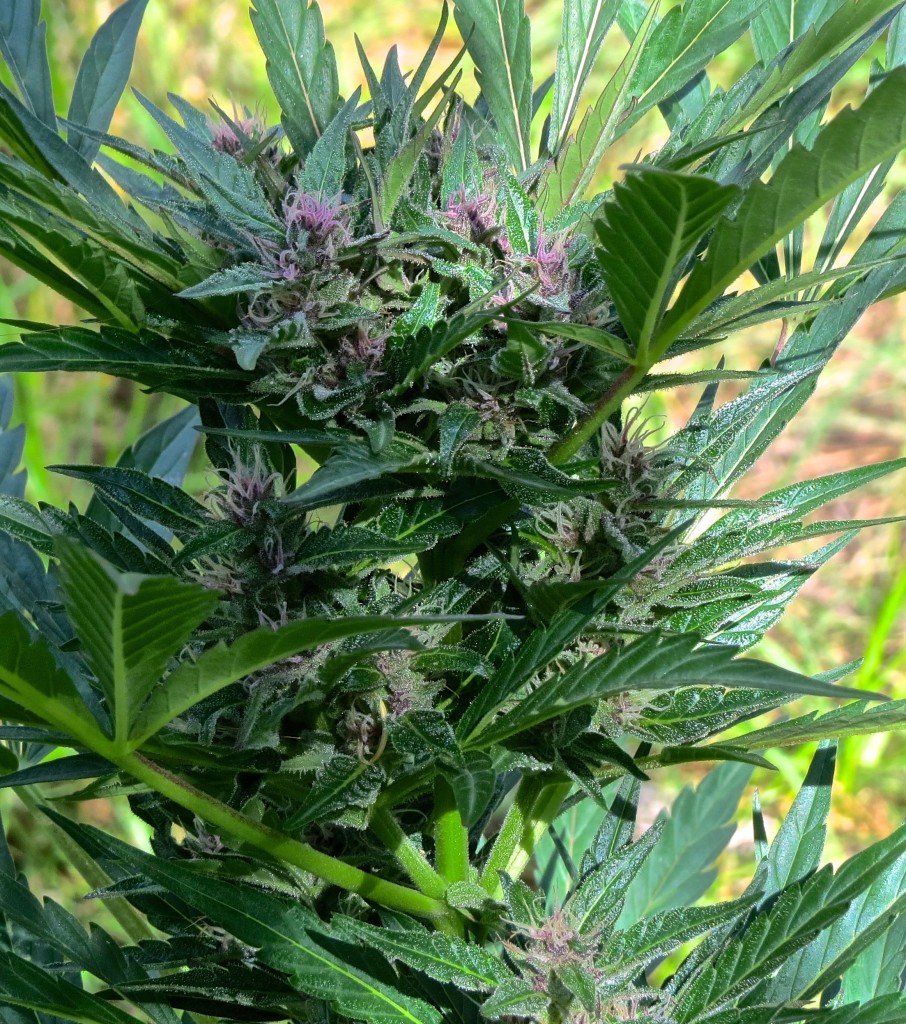
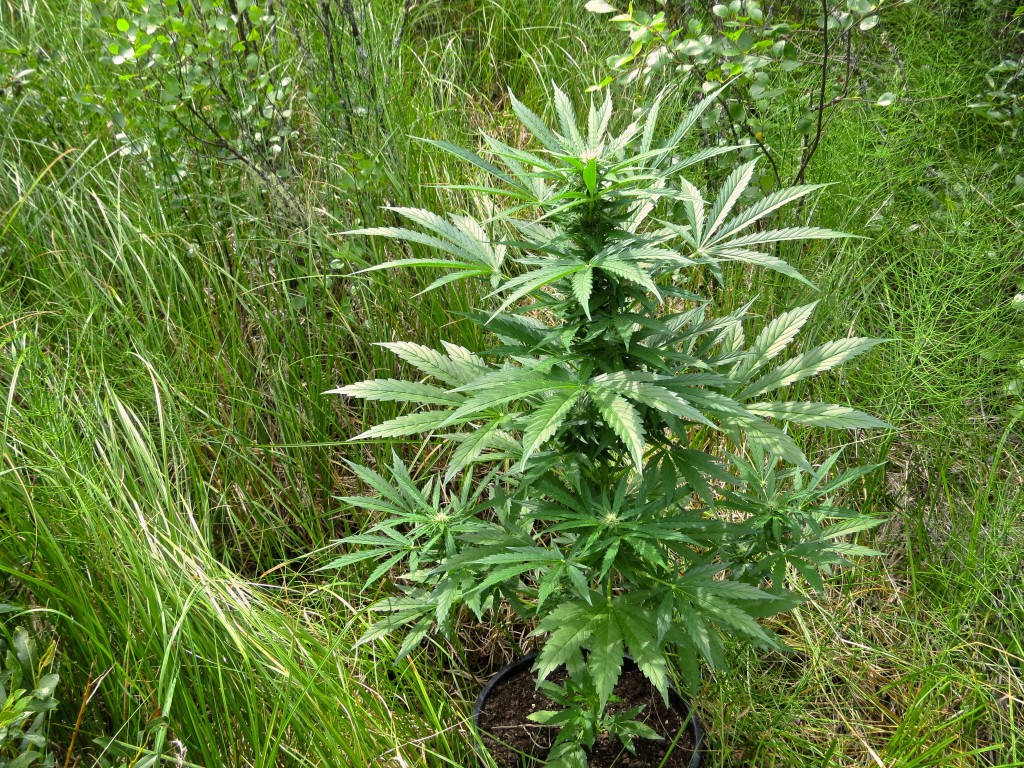
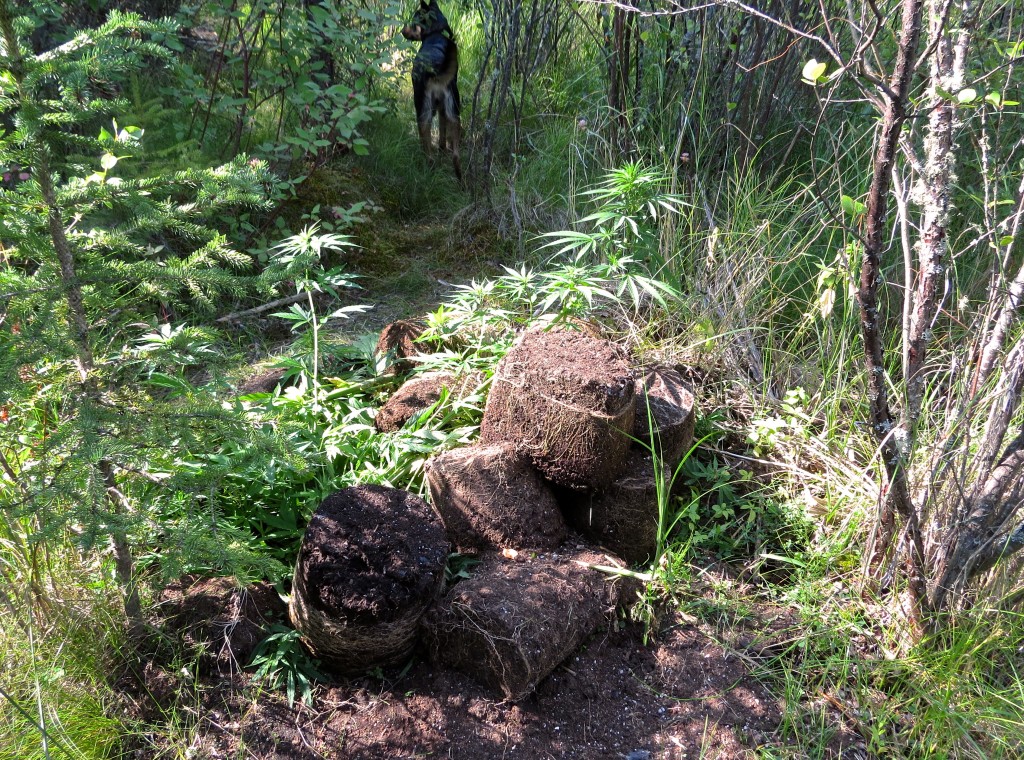
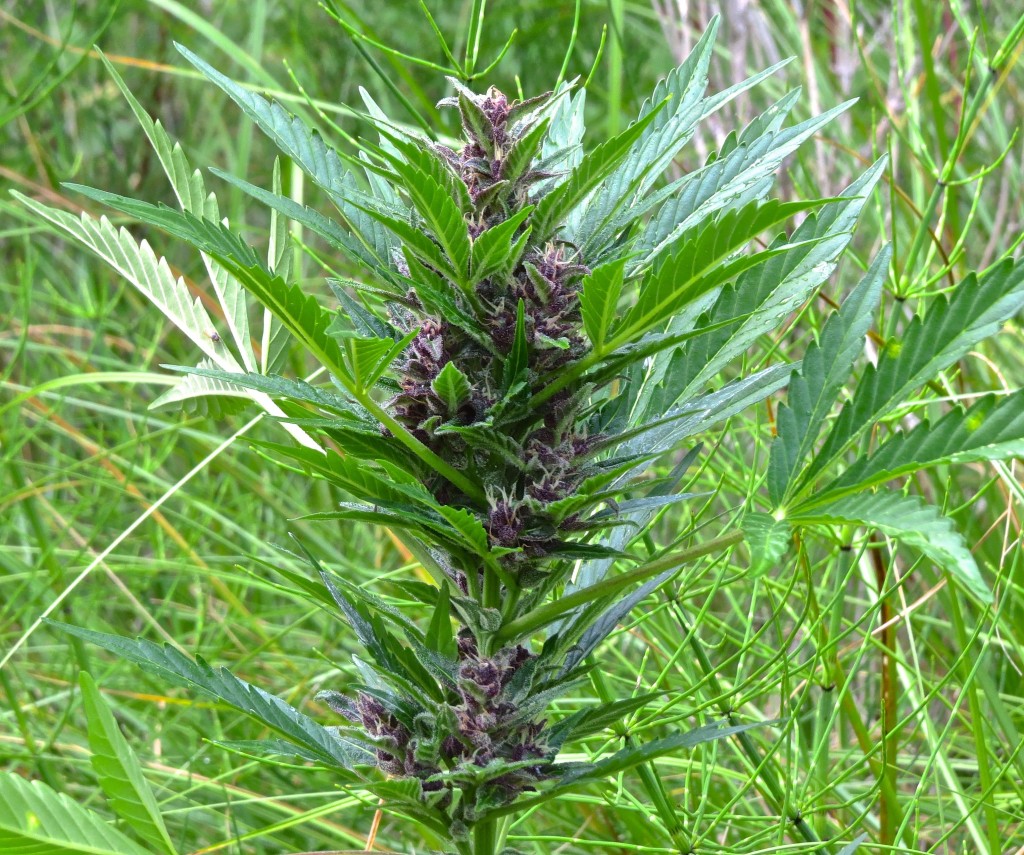
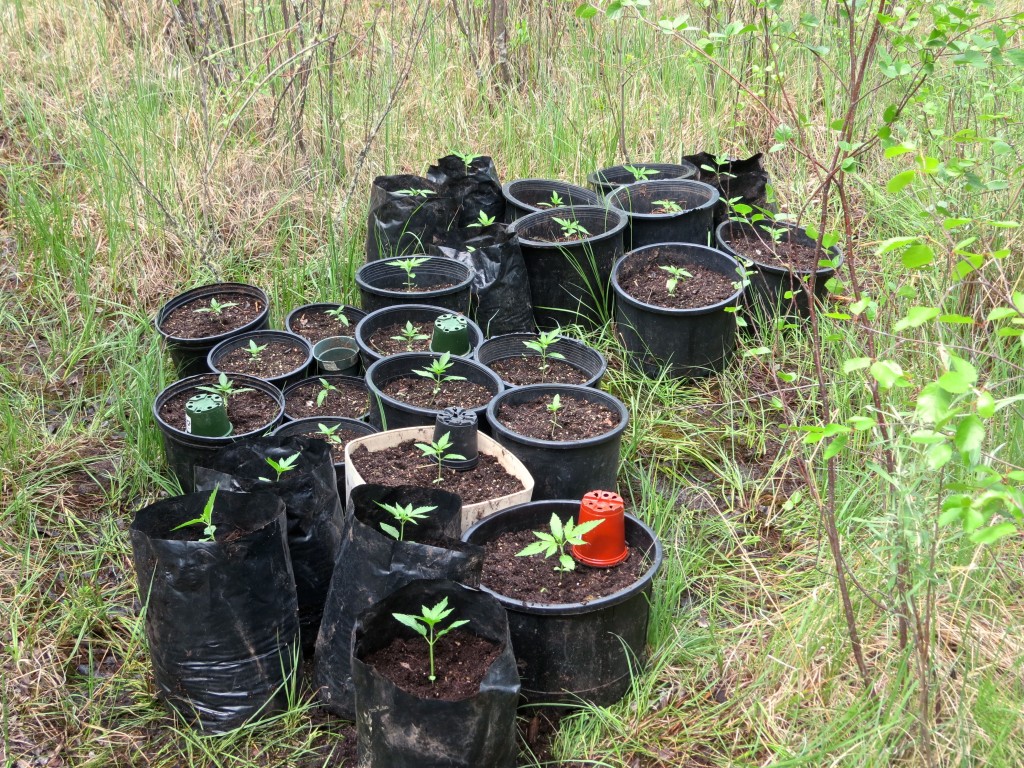
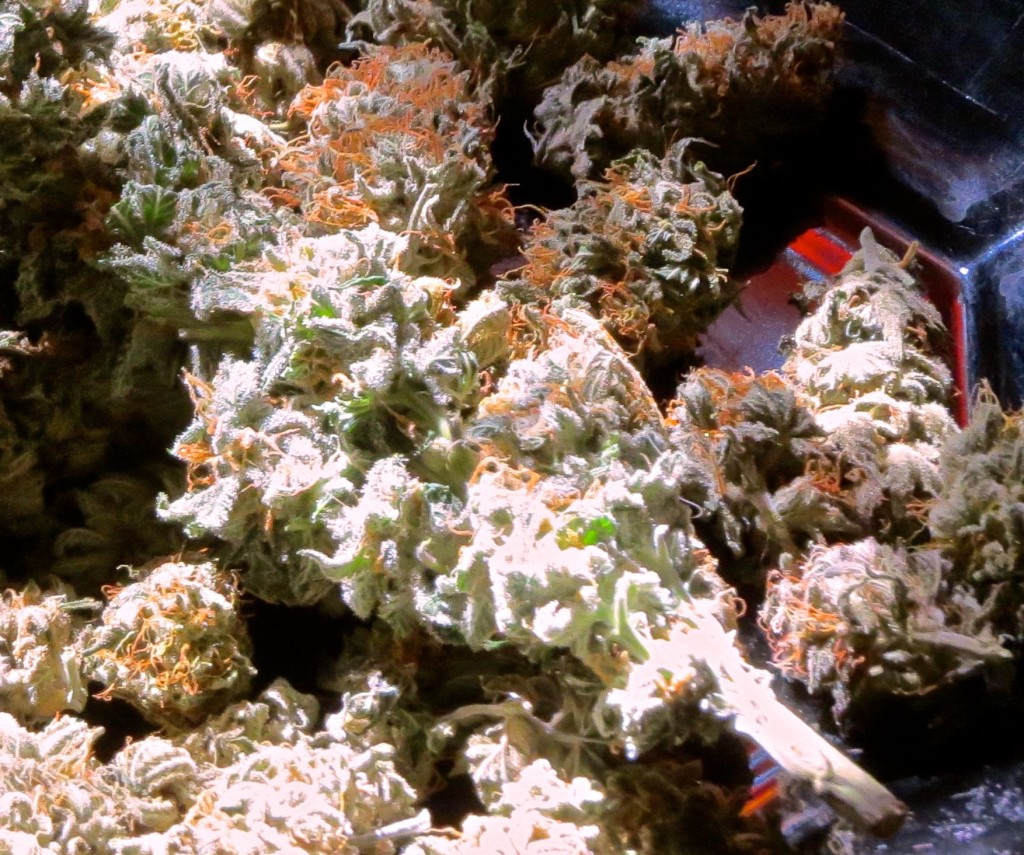
Leave your comment